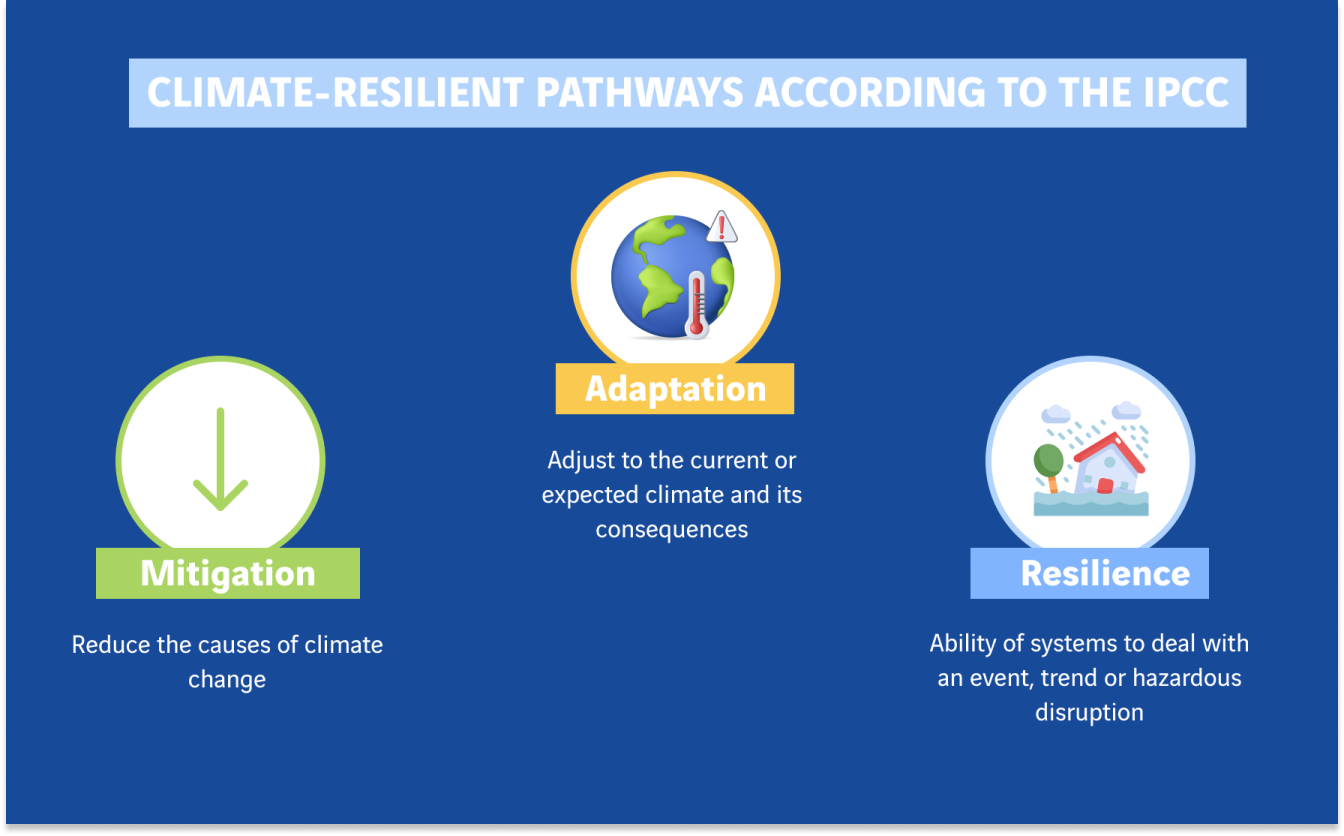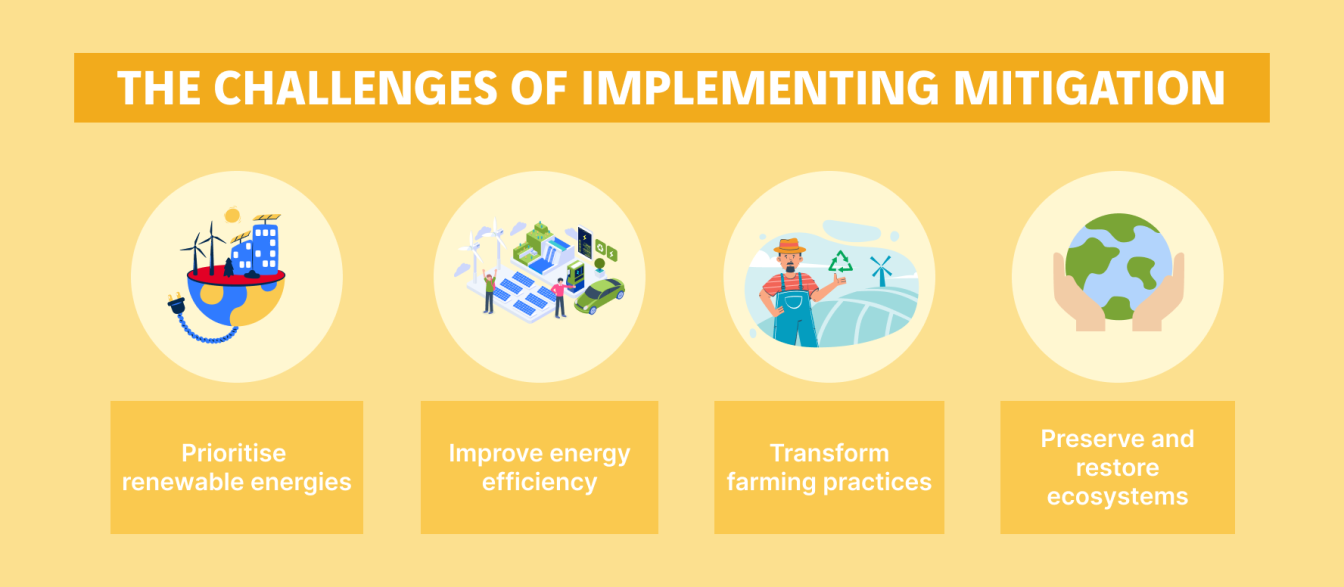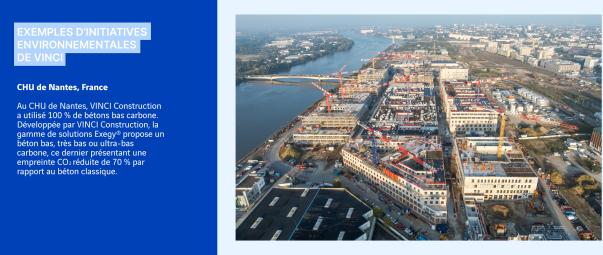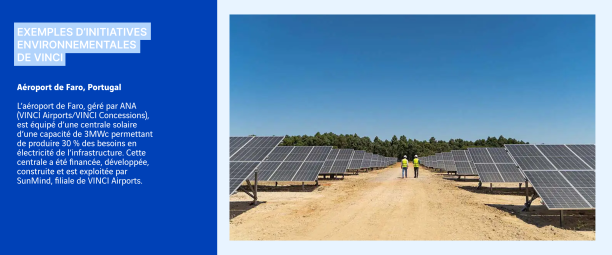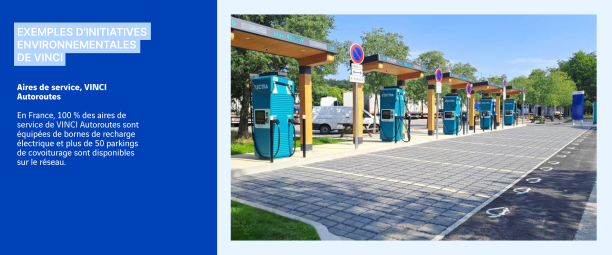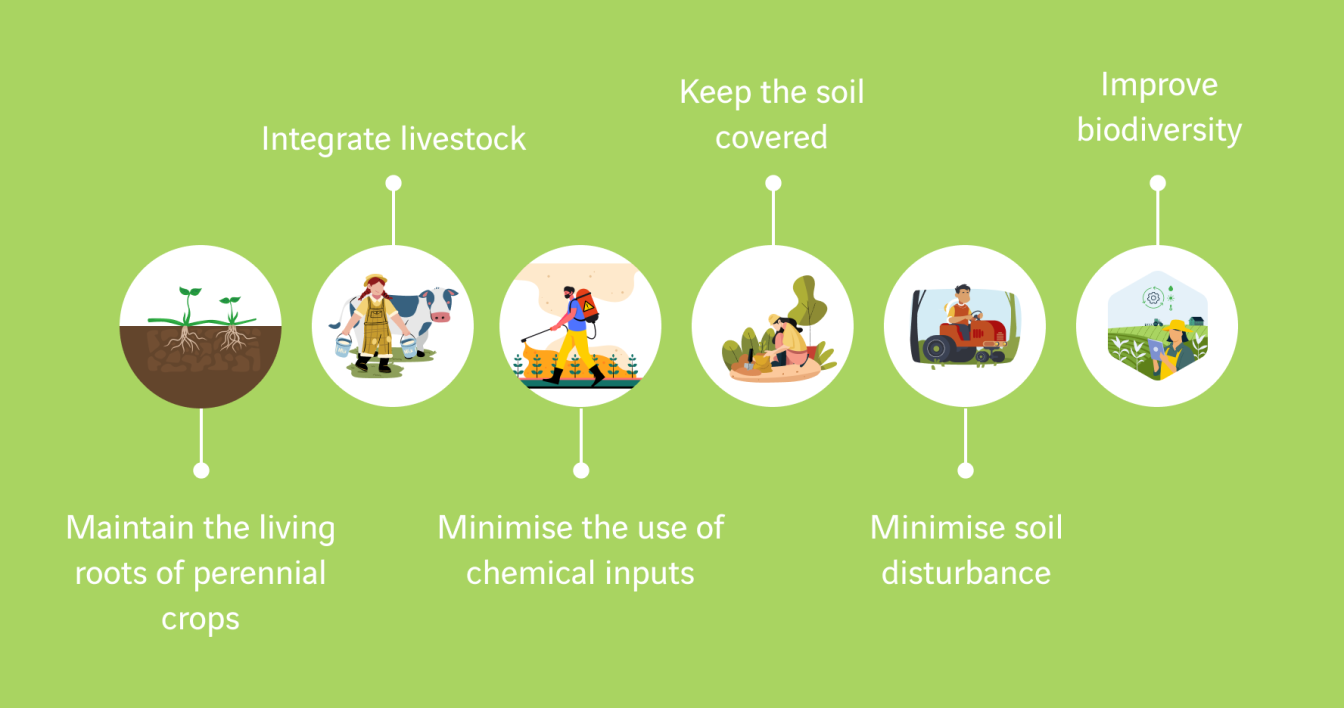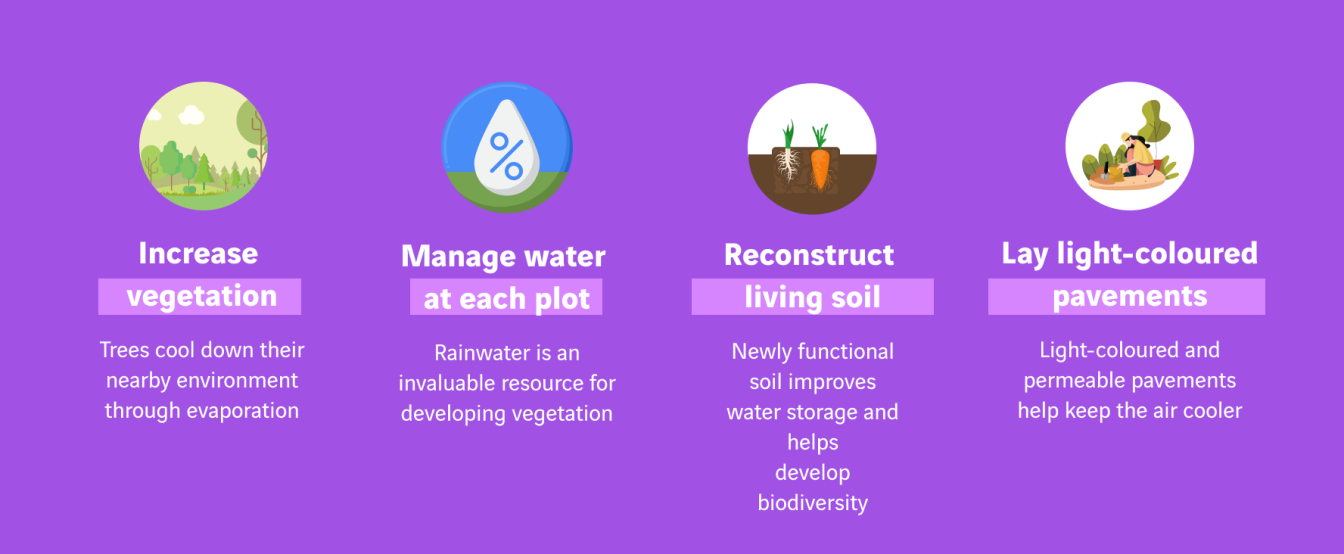
Mitigation and adaptation: solutions for greater resistance
According to a UN Environment Programme (UNEP) report, predicted 2030 greenhouse gas (GHG) emissions must fall by 28% to get on track to achieve the Paris Agreement goal of limiting global warming to below 2°C. In light of this observation, several tools and strategies are being rolled out. Mitigation, adaptation and resilience: insights into the vocabulary and methods.
In the same report
Diagnostics and prevention driving climate change adaptation.
If we refer to the definitions provided by the Intergovernmental Panel on Climate Change (IPCC), the pathways for increasing the climate resilience of our societies can be summarised as follows:
The three concepts are closely related. The second concept, which aims to anticipate and limit the negative effects of climate change, goes hand-in-hand with the first concept, which is primarily focused on lowering (or at least stabilising) greenhouse gas emissions. Adaptation actions will deliver an even more effective response where global warming is limited or stabilised. Finally, adaptation and mitigation solutions work together in supporting the challenge of improving resilience, meaning the ability of a community to minimise its exposure and fragility to climate-related hazards.
Mitigation: a long and multi-dimensional effort
Today, most nations, economic sectors and populations have embraced the concept of mitigation. Implementing a tangible mitigation strategy involves mobilising resources, leading initiatives, phasing out fossil fuels in favour of renewable energies, improving energy efficiency, transforming farming practices, and preserving and restoring ecosystems.
Irrespective of the project, mitigation solutions will produce a greater effect if they are modelled on a “by design” strategy, meaning that mitigation measures are specifically incorporated when designing an infrastructure, product or service rather than at a later stage.
Aware of the responsibilities that it bears through its activities as a transport infrastructure operator, as well as through its construction and energy businesses, VINCI has defined an ambitious environmental programme for 2030 driven by three priority areas. The first - Act for the climate - aims to achieve a 40% reduction in the Group’s direct GHG emissions by 40% compared to 2018 and a 20% reduction in indirect emissions compared to 2019. The second - Optimise resources through the circular economy - is focused on improving design and production processes, reducing the extraction of raw materials, and promoting reuse and recycling. The third - Preserve natural environments - involves minimising the impact of the Group’s business activities on the natural environments, preserving water resources and encouraging renaturation.
Adaptation: improving resistance
National adaptation plans
National adaptation plans (NAPs)
According to the UN Environment Programme, the NAP process seeks to identify medium and long-term adaptation needs. Once major vulnerabilities have been identified, the NAP process develops strategies to address them with two overarching objectives: reduce vulnerability to the impacts of climate change, and facilitate the integration of climate change integration into new and existing policies, especially development planning strategies.
Whereas the idea with mitigation is to take action on the causes of climate change, adaptation involves coping with the consequences, i.e. limiting and even anticipating its impact and its negative effects on society and ecosystems. The second National Adaptation Plan for Climate Change (PNACC-2) that the French Government launched in 2018 provides an overview of the solutions that need developing to address climate change issues, such as:
- adapting land use and urban planning strategies to protect against flooding;
- improving cyclone forecasts and warning systems for local populations;
- adopting new wood species offering greater resilience and introducing new land management practices in response to fire risks;
The private sector: a central role in leading adaptation
Economic players are an essential part of the equation for adapting to climate change. A prime example is the property construction sector, which is committed to reducing land take, especially in the wake of France’s Climate and Resilience Act of 22 August 2021, which formally sets out an objective of no net land take by 2050. This act aims to give greater consideration to the environmental consequences during construction and land-use planning, without turning a blind eye to communities’ needs for housing, infrastructure and activities.
The issue of restoring and/or preserving land in an effort to adapt to climate change spreads far beyond our communities’ borders. Regenerative agriculture is one of the adaptation pathways, since it promotes eco-friendly practices to tackle climate change, including crop rotation, permanent soil cover, zero tillage, and reintroducing trees into fields.
Achieve no net land take 20 years ahead of schedule
VINCI Immobilier is aiming for no net land take by 2030.
To achieve this target, the company is using three main action levers:
- recycle obsolete land according to circular economy principles;
- reefuse projects with excessive land take;
- offset soil sealing: for each square metre of sealed soil, a square metre is returned to nature in another project.
Harnessing innovation to provide the public authorities with solutions to meet adaptation needs is one of the main drivers powering companies’ business activities. The fight against heatwaves reflects this very trend: VINCI Construction has developed Revilo® to help local authorities create urban cool islands. Several strategies can be put into action, such as rebuilding and decontaminating land, avoiding waterproof coverings on the ground, and developing green spaces.
The idea is to prepare our homes and infrastructures to withstand extreme weather events, including torrential rain and storms. Whether based on human constructions or drawing their inspiration from nature, adaptation solutions to combat flooding are gaining traction.
Action must be taken to make our societies more resilient to the effects of climate change. There will be major impacts for protecting our environment, but also for shielding our societies against labour disputes and ever wider rifts in social inequality and disparities.
Sources
Emissions Gap Report, UNEP
https://www.ecologie.gouv.fr/politiques-publiques/adaptation-france-changement-climatique
https://theshiftproject.org/article/climat-effets-adaptation-6eme-rapport-giec/
https://www.ecologie.gouv.fr/sites/default/files/documents/2018.12.20_Comprendre_le_PNACC2_0.pdf
https://www.unep.org/topics/climate-action/adaptation/national-adaptation-plans
Subscribe
Stay tuned : receive our newsletter
Every quarter, discover new articles, exclusive features and experts' views delivered straight to your inbox.
Most viewed
Explore more

Marina Lévy - Companies at the heart of ocean conservation issues
Marina Lévy, oceanographer, research director at the CNRS and ocean advisor to the president of the French National Research…

Building with and for nature
Whether creating barrages, stripping away topsoil, cutting down trees or digging channels, humans have spent thousands of…

Bridging the construction gender gap: paving the way to a career in industry for women in Colombia
In 2025, the Ruta 40 consortium led by VINCI Construction Grands Projets completed work on widening and upgrading the Bogotá…
